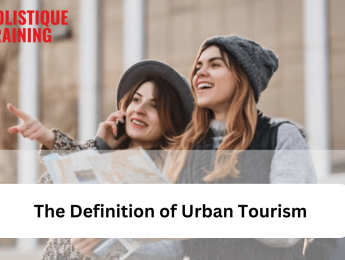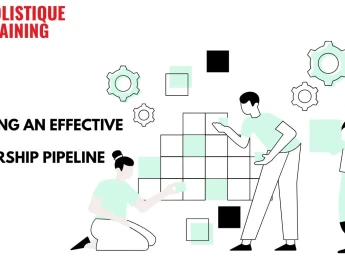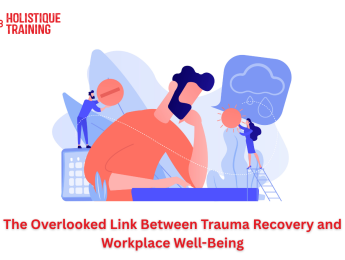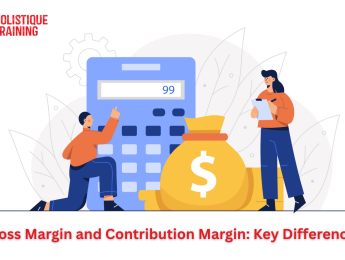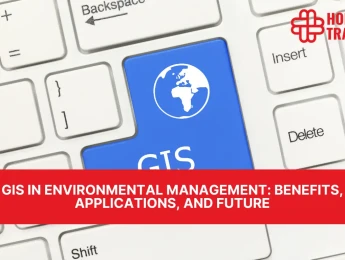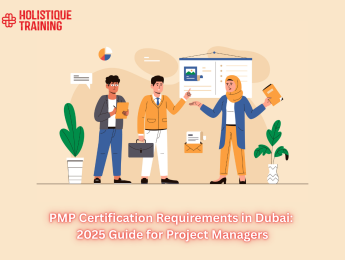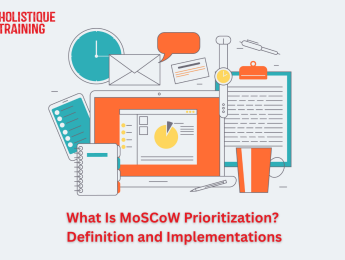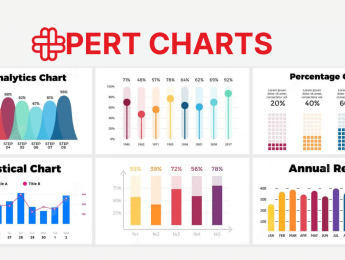Introduction
From the towering skyscrapers of New York City to the enchanting canals of Venice, urban tourism has emerged as a vibrant tapestry of experiences, inviting travellers to explore the beating heart of modern civilization. In the cacophony of city life, the allure of urban destinations lies in their fusion of culture, history, and progress, offering an unforgettable adventure for seekers of novel experiences. As cities worldwide embrace urbanisation and globalisation, their magnetic pull on tourists from all corners of the globe continues to grow stronger. Beyond being a playground for sightseers, urban tourism plays a pivotal role in shaping local economies, preserving cultural heritage, and fostering international camaraderie. However, it also brings forth an array of social implications that demand thoughtful consideration. In this blog post, we will unravel the essence of urban tourism, its impact on society and the environment, and explore effective strategies to promote it responsibly and sustainably. So, fasten your seatbelts and get ready to navigate the intricacies of urban tourism, unlocking the hidden treasures of cities that pulse with life and history.
The Definition of Urban Tourism
Urban tourism, simply put, refers to the act of travelling to cities for leisure and exploration. These destinations are typically characterised by their high population density, diverse cultural offerings, and modern infrastructure. Urban tourism encapsulates a wide range of experiences, from indulging in art and entertainment to savouring local cuisine and shopping. The key attraction lies in the unique blend of historical landmarks, contemporary architecture, and the bustling urban lifestyle, which sets cities apart from rural and natural destinations.
Urban tourism is a dynamic and multifaceted phenomenon. Travellers seeking an immersive experience often find cities to be a treasure trove of activities and opportunities to connect with the local community. The fusion of history and modernity, along with the abundance of amenities, makes urban destinations a compelling choice for a diverse range of tourists.
Table 1: A comparison of key features in urban tourism
Feature | Urban Tourism | Rural/Natural Tourism |
Population Density | High | Low |
Cultural Offerings | Diverse | Limited |
Infrastructure | Modern | Basic |
Historical Landmarks | Abundant | Sparse |
Local Lifestyle | Urban | Rural |
Activities | Varied | Nature-Centric |
How Does It Help the Government?
Urban tourism can be a potent economic driver for governments, especially in countries with thriving cities. The influx of tourists brings a multitude of benefits to the local economy, positively impacting various sectors and creating employment opportunities. Let's delve into some of the ways in which urban tourism supports the government:
1. Economic Growth and Revenue Generation
One of the most immediate and tangible benefits of urban tourism for governments is the significant revenue it generates. Tourists spend on accommodations, dining, entertainment, transportation, and shopping, all of which contribute to local businesses. The taxes, fees, and licensing charges applied to these transactions create a steady stream of income for the government coffers. This influx of funds can be strategically reinvested in various sectors, thus fueling further economic growth.
2. Job Creation and Employment Opportunities
The tourism industry is a robust employer, offering a wide range of jobs from hotel staff and tour guides to artisans and transportation professionals. As urban tourism flourishes, the demand for these services increases, leading to a surge in employment opportunities. This not only reduces unemployment rates but also enhances the overall standard of living, as more people find stable and rewarding employment.
3. Cultural Preservation and Heritage Conservation
Tourism often triggers a renewed interest in local culture and heritage. Recognising this, governments can allocate a portion of the revenue earned from tourism towards the preservation and restoration of historical sites, museums, and cultural events. By investing in these aspects, governments ensure the continuity of their heritage, allowing future generations to connect with their roots and learn from their history.
4. Fostering Diplomacy and International Relations
Urban tourism serves as a powerful tool for cultural exchange and diplomacy. When people from different countries visit a city, they interact, understand each other's customs, and forge connections. Such interactions promote international camaraderie and understanding, fostering peaceful relations between nations. Through collaborative initiatives and cultural exchanges, cities can strengthen diplomatic ties and global cooperation.
5. Empowering Local Communities
Tourism can be a force for community empowerment, especially when the industry actively involves local residents. Initiatives such as community-based tourism and homestays enable tourists to experience the daily life of locals authentically. When income from tourism directly benefits local communities, it encourages them to preserve their heritage and traditions. Additionally, as tourists engage with these communities, they gain a deeper understanding of the local way of life, fostering mutual respect and appreciation.
6. Infrastructure Development
The revenue generated from urban tourism can be channelled into developing and improving urban infrastructure. This includes upgrading transportation systems, enhancing public spaces, and implementing safety measures. Better infrastructure not only benefits tourists but also improves the overall quality of life for residents. Additionally, efficient transportation systems can reduce traffic congestion and lower carbon emissions, contributing to a more sustainable urban environment.
7. Diversification of the Economy
Tourism offers diversification to urban economies. Cities heavily reliant on specific industries can mitigate risks by promoting tourism. By attracting visitors interested in diverse experiences such as art, culinary delights, historical sites, and cultural events, cities can create a resilient economy less susceptible to fluctuations in other sectors.
In summary, urban tourism stands as a multifaceted asset for governments, providing economic stability, cultural preservation, international goodwill, and community empowerment. By fostering responsible tourism practices and reinvesting in the local community, governments can ensure that urban tourism continues to be a sustainable and mutually beneficial endeavour.
Urbanisation and Globalisation
The growth of urban tourism is closely intertwined with the global trends of urbanisation and globalisation. As the world becomes more interconnected, cities have become epicentres of economic, social, and cultural activity. Let's explore how these two trends have influenced urban tourism:
1. Urbanisation
Population Growth and Infrastructure Development
The rapid urbanisation witnessed globally has led to the expansion and development of cities, transforming them into vibrant and dynamic hubs. As more people flock to urban areas, cities have responded by building modern infrastructure, skyscrapers, efficient transportation systems, and recreational facilities. These enhancements create an inviting environment for tourists, offering a plethora of attractions and amenities.
Cultural Diversity and Experiences
Urbanisation brings together people from diverse backgrounds, cultures, and traditions. This rich cultural tapestry becomes a major draw for tourists seeking immersive experiences. In cosmopolitan cities, visitors can indulge in global cuisines, witness multicultural festivals, and explore ethnic neighbourhoods, providing a diverse and vibrant experience that reflects the amalgamation of cultures brought about by urbanisation.
Innovation and Entrepreneurship
Urbanisation fosters innovation and entrepreneurship, leading to the emergence of unique and creative tourism offerings. Cities become incubators for art galleries, theatres, music venues, and experimental dining experiences. This creativity not only enriches the lives of residents but also provides an array of options for tourists looking for unconventional and enriching urban experiences.
2. Globalisation:
Ease of Travel and Connectivity
Globalisation has revolutionised the way we travel. Enhanced connectivity through air travel, high-speed trains, and advanced road networks has made it easier for people to traverse continents and explore cities. This ease of travel has significantly contributed to the rise in urban tourism, allowing tourists to explore diverse cultures and experiences, transcending geographical barriers.
Cultural Exchange and Interconnectedness
Globalisation promotes cultural exchange and interconnectedness. People from different corners of the world are now more aware of diverse customs, traditions, and lifestyles. Tourists, therefore, are not just seeking sightseeing but are driven by a desire to immerse themselves in the unique cultures of cities. This intercultural dialogue enriches both tourists and locals, fostering mutual understanding and appreciation.
Economic Growth and Investment
Globalisation encourages international investments and partnerships. Cities, as economic powerhouses, attract global businesses, leading to economic growth. With the growth of businesses and job opportunities, cities become more appealing for tourism. The influx of international businesses often leads to an influx of business travellers, further boosting the urban tourism sector.
Digital Globalisation
The digital revolution has facilitated globalisation by connecting people in real-time. Social media platforms, travel apps, and online reviews enable tourists to discover urban destinations, plan their itineraries, and share their experiences. This digital interconnectedness has amplified the visibility of cities, making them more accessible and enticing for travellers worldwide.
In short, urbanisation and globalisation are not just abstract concepts; they are living phenomena that have transformed cities into multifaceted centres of cultural exchange, economic growth, and tourism. The blending of diverse cultures, the ease of travel, and the digital interconnectedness have all contributed to the rise of urban tourism. As cities continue to evolve under the influence of these powerful forces, the world of urban tourism is destined to grow, offering even more enriching experiences for travellers and further cementing cities as the heartbeats of global exploration.
Social Impact of Urban Tourism
While urban tourism presents numerous benefits, it also brings about social implications that necessitate careful consideration. As tourist numbers surge, cities face the challenge of maintaining a delicate balance between catering to tourists' needs and preserving the local way of life. Here are some key social impacts of urban tourism:
Gentrification
Gentrification, an inevitable consequence of rising tourist demand, poses challenges to established communities. While urban renewal can bring positive changes, it's vital to strike a balance. Responsible urban tourism initiatives can involve local communities, ensuring they benefit from the economic growth. Preservation of affordable housing and cultural spaces is essential, maintaining the neighbourhood's essence while embracing the positive aspects of gentrification.
Overtourism
Overtourism, a growing concern in bustling urban centres, requires thoughtful management. According to a National Geographic article, 80% of travellers concentrate on only 10% of global tourism destinations. Additionally, the article states that the UNWTO anticipates a surge in global tourists, projected to reach 1.8 billion by 2030 from the 2019 peak of 1.5 billion. Implementing visitor caps for sensitive areas and diversifying tourist attractions can alleviate the pressure on crowded spots. Encouraging tourists to explore off-the-beaten-path locations not only benefits local businesses but also allows visitors to experience the authentic pulse of the city, beyond the touristy façade.
Cultural Erosion
Uncontrolled tourism can sometimes lead to a dilution of local culture, as businesses cater to tourist preferences. Cities must enact policies that balance catering to tourists' needs while safeguarding authentic traditions. Supporting local artisans, traditional craftsmen, and cultural events can foster an environment where tourists can engage with genuine cultural experiences, preserving the unique identity of the city.
Social Tensions
Social tensions between locals and tourists can arise due to cultural misunderstandings and the impact of tourism on daily life. Cities can mitigate these tensions through cultural awareness programs, promoting understanding between residents and visitors. Additionally, involving locals in tourism-related activities, such as guided tours led by community members, can foster a sense of pride among residents and enhance tourists' understanding of the local way of life.
Community Empowerment
Empowering local communities is not just a social responsibility but a key aspect of sustainable urban tourism. Initiatives like community-based tourism, where residents actively participate in sharing their heritage, create a sense of ownership. Homestays, cultural workshops, and community-led tours allow tourists to experience the city through the eyes of its residents, fostering mutual respect and understanding, and directly benefiting the local economy.
In summary, managing the social impact of urban tourism requires a delicate balance. By actively involving communities, promoting responsible tourism practices, and preserving local traditions, cities can create a harmonious environment where tourism thrives, and residents and visitors coexist peacefully, ensuring the city's social fabric remains vibrant and intact.
How to Promote Urban Tourism
As reported by the United Nations in 2015, more than half of the global population, amounting to 54%, resided in urban regions. Projections indicate that this figure is expected to increase to 60% by the year 2030.
This increasing urbanisation trend has significant implications for promoting urban tourism. As more people move to urban areas, cities become even more attractive as tourism destinations. With a higher concentration of population and diverse cultural offerings, urban areas have the potential to draw more tourists seeking immersive experiences.
Promoting urban tourism requires a thoughtful and multifaceted approach that balances the needs of tourists with the preservation of the city's essence and well-being of its residents. By adopting sustainable practices and fostering community engagement, cities can create a thriving tourism ecosystem that benefits all stakeholders. Here are some elaborate strategies to effectively promote urban tourism:
Sustainable Development and Infrastructure Enhancement
Cities must prioritise sustainable development practices that protect the environment and enhance the urban experience. This involves investing in green spaces, improving public transportation, and encouraging eco-friendly initiatives. Creating pedestrian-friendly zones and bicycle lanes not only reduces carbon emissions but also allows tourists to explore the city more intimately.
Cultural and Creative Experiences
Beyond the iconic landmarks, urban destinations boast a wealth of cultural and creative offerings. Cities can collaborate with local artists, musicians, and performers to curate authentic experiences that immerse tourists in the city's artistic spirit. Street festivals, art walks, and live performances can showcase the city's vibrant cultural tapestry.
Community Involvement and Homestays
Engaging the local community in the tourism industry fosters a sense of ownership and pride. Encouraging homestays and community-based tourism initiatives enables tourists to experience the daily life of locals while empowering residents to showcase their heritage and traditions.
Digital Innovation and Smart Tourism
Leveraging technology can significantly enhance the urban tourism experience. Cities can develop user-friendly apps that provide real-time information about attractions, events, and crowd densities. Smart city solutions, such as waste management and energy conservation, contribute to a more sustainable and efficient urban environment.
Collaboration with the Private Sector
Public-private partnerships play a crucial role in promoting urban tourism. Working with the private sector, cities can create diverse tourism offerings, ranging from boutique hotels and unique dining experiences to themed tours and adventure activities.
Responsible Marketing and Branding
Effective marketing campaigns that highlight the city's unique attributes while promoting responsible tourism are vital. Emphasising sustainable practices, cultural diversity, and community involvement can attract conscientious travellers who seek authentic and meaningful experiences.
Capacity Management and Over Tourism Mitigation
Monitoring and managing visitor numbers are essential to prevent overtourism. Implementing timed entry systems for popular attractions, setting visitor limits for sensitive areas, and encouraging tourists to explore lesser-known neighbourhoods can disperse crowds and maintain a sustainable balance.
Accessibility and Inclusivity
Urban tourism should be accessible to all travellers, regardless of physical abilities or economic backgrounds. Cities can focus on making tourist sites and transportation options more inclusive and accommodating to a diverse range of visitors.
Crisis Preparedness and Safety Measures
In an increasingly uncertain world, cities must prioritise crisis preparedness and implement safety measures for tourists. Establishing emergency response systems, informing tourists about safety protocols, and creating secure environments are vital for promoting urban tourism.
The Role of Technology in Urban Tourism
In today's digital age, technology plays a significant role in urban tourism. The integration of smart solutions and innovative applications has transformed the way tourists experience cities. Here are some key areas where technology influences urban tourism:
1. Mobile Apps for Tourists
Mobile applications have revolutionised the way tourists navigate cities. These apps provide real-time information about attractions, events, and services. They offer features like interactive maps, language translation, and personalised recommendations, enabling tourists to plan their itineraries efficiently. From locating historical landmarks to discovering hidden gems, these apps enhance the overall travel experience, making urban exploration more accessible and engaging.
2. Smart City Initiatives
Smart city solutions, encompassing initiatives like waste management, energy conservation, and efficient transportation systems, play a pivotal role in sustainable urban tourism. Smart waste disposal reduces environmental impact, ensuring cities remain clean and attractive. Energy-efficient practices not only lower carbon emissions but also contribute to creating a more eco-friendly environment. Additionally, optimised public transportation systems minimise congestion, making commuting convenient for both residents and tourists, promoting a greener and more sustainable urban landscape.
3. Virtual Reality (VR) and Augmented Reality (AR)
VR and AR technologies have opened new frontiers in urban tourism. Tourists can embark on virtual tours, exploring historical sites, museums, and cultural events from the comfort of their hotels. This immersive experience provides a glimpse into the city's heritage, allowing visitors to travel back in time and witness its evolution. Similarly, AR applications enhance the physical environment by overlaying digital information, providing interactive guides, historical facts, and even gamified experiences. These technologies deepen tourists' engagement with the city, fostering a sense of connection and understanding.
Table 2: The role of technology in urban tourism
4. Data-Driven Decision Making
Cities are increasingly harnessing the power of data analytics to manage tourism effectively. Analysing tourist behaviour, preferences, and patterns helps urban authorities make informed decisions. By understanding peak visitation times, popular attractions, and areas prone to congestion, cities can optimise resources. This data-driven approach ensures efficient crowd management, enhances visitor experiences, and contributes to a more enjoyable and stress-free urban adventure.
5. Digital Globalisation and Social Media
Digital globalisation, coupled with the proliferation of social media, has transformed how cities are perceived and explored. Social media platforms serve as virtual travel guides, where tourists share their experiences, recommendations, and tips. The instant sharing of photographs and stories not only inspires others to visit but also promotes unique and offbeat attractions, diversifying tourism beyond conventional landmarks. Additionally, cities are leveraging social media for real-time communication with tourists, addressing concerns, providing updates, and fostering a sense of community among travellers.
In summary, technology has become an indispensable ally in shaping the future of urban tourism. From enhancing visitor experiences and promoting sustainability to expanding the reach of cities globally, technology continues to redefine how we explore and interact with urban landscapes. As cities embrace these innovations, urban tourism evolves into a more immersive, inclusive, and environmentally conscious endeavour, ensuring that the magic of urban exploration is accessible to all, while preserving the essence of cities for generations to come.
Conclusion
Urban tourism is a powerful force that propels cities into the global spotlight. As travellers seek experiences that transcend mere sightseeing, cities offer an unparalleled blend of history, modernity, and culture. For governments, urban tourism represents an opportunity for economic growth, job creation, and cultural preservation. Nevertheless, it is essential to approach tourism development with sensitivity, ensuring that it remains sustainable, respectful of local traditions, and benefits all members of the community. By embracing responsible tourism practices, cities can maximise the positive impact of urban tourism while preserving their unique identity for generations to come. So, pack your bags and embark on an urban adventure that promises to be enriching, transformative, and unforgettable.
In your pursuit of unravelling the marvels of urban tourism and contributing to the sustainable growth of cities, make sure to check out our course, ‘Becoming a Touring Professional.’ This comprehensive programme equips aspiring tourism professionals with the knowledge and skills to curate enriching experiences, embrace responsible tourism practices, and leave an indelible mark on the urban tourism landscape. Join us in shaping the future of urban exploration and make a difference in the world of travel.


